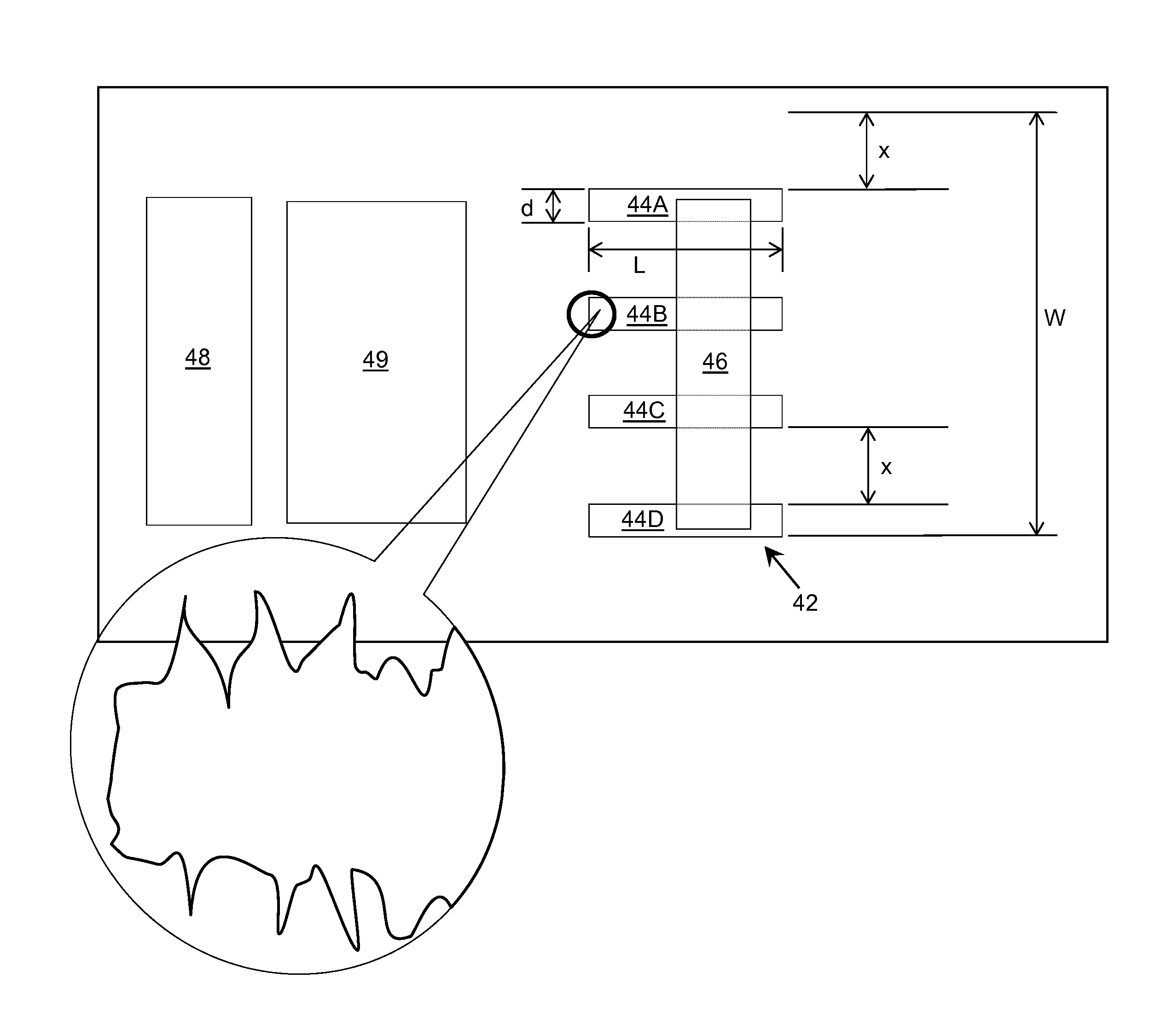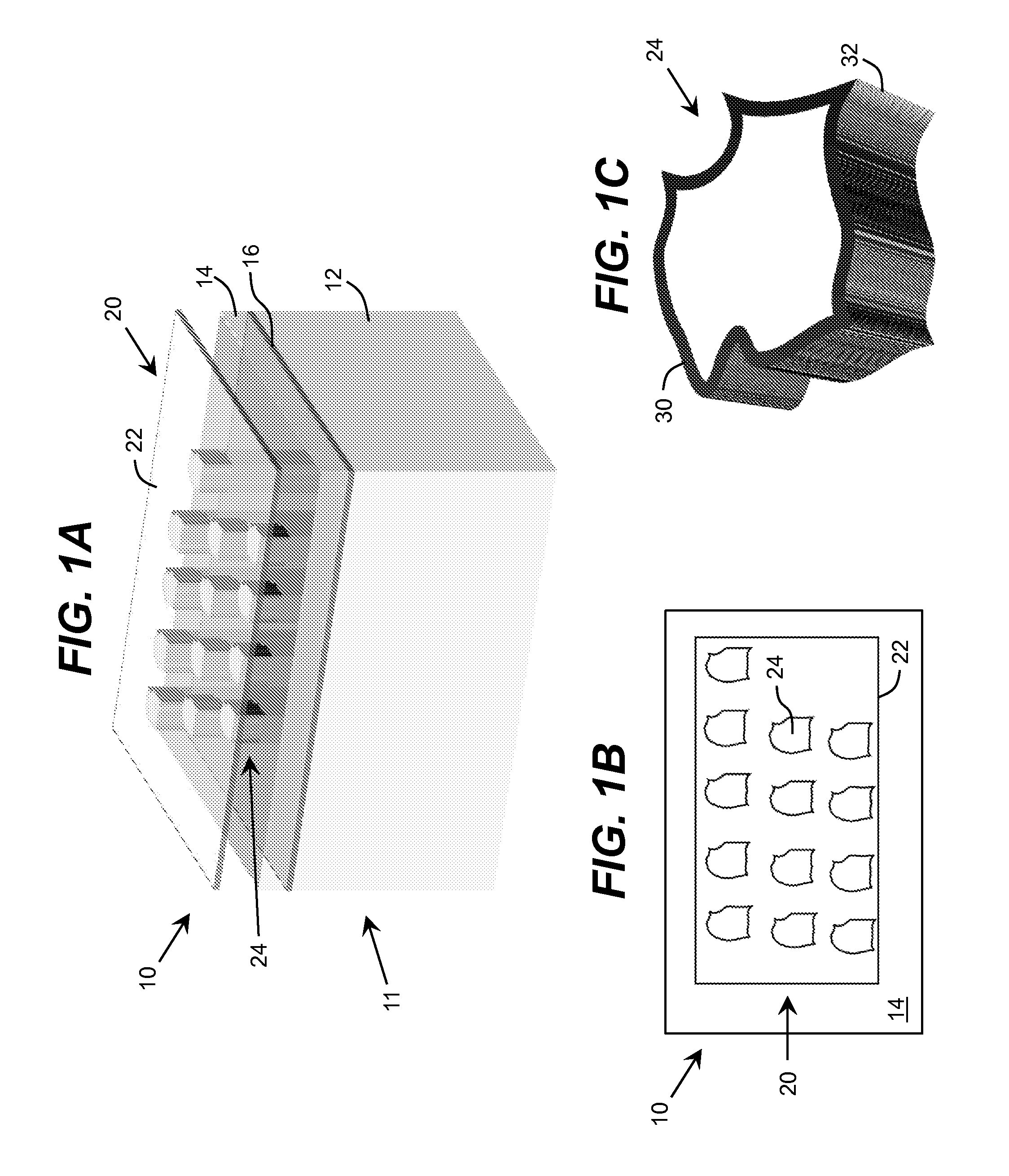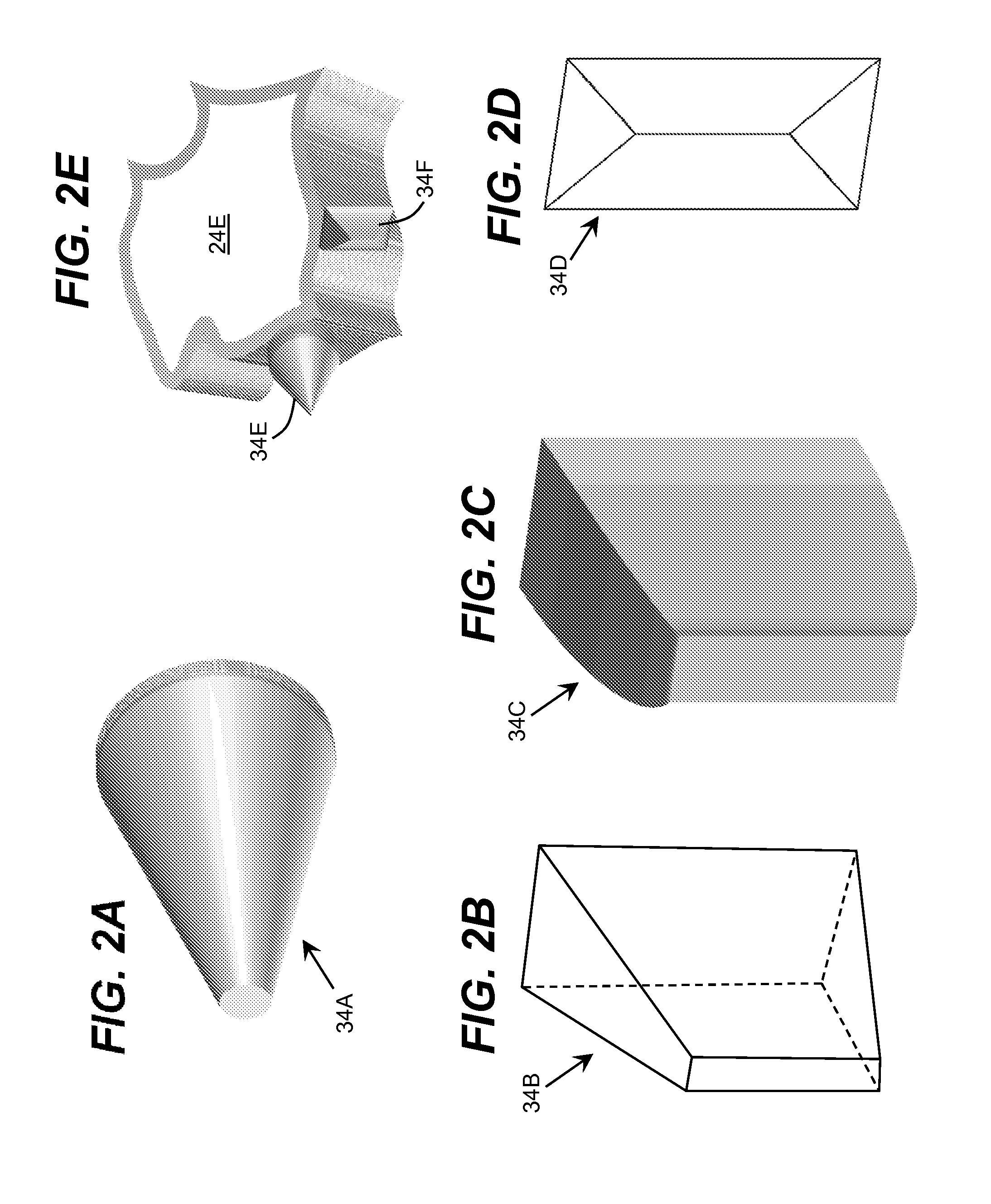Ohmic Contact to Semiconductor Layer
a technology of ohmic contact and semiconductor layer, which is applied in the field of ohmic contact, can solve the problems of deteriorating device performance, difficult to grow well doped p-type gan with a carrier concentration of more than 10
- Summary
- Abstract
- Description
- Claims
- Application Information
AI Technical Summary
Benefits of technology
Problems solved by technology
Method used
Image
Examples
Embodiment Construction
[0030]As indicated above, aspects of the invention provide a perforating ohmic contact to a semiconductor layer in a semiconductor structure. The perforating ohmic contact can include a set of perforating elements, which can include a set of metal protrusions laterally penetrating the semiconductor layer(s). The perforating elements can be separated from one another by a characteristic length scale selected based on a sheet resistance of the semiconductor layer and a contact resistance per unit length of a metal of the perforating ohmic contact contacting the semiconductor layer. The structure can be annealed using a set of conditions configured to ensure formation of the set of metal protrusions. As used herein, unless otherwise noted, the term “set” means one or more (i.e., at least one) and the phrase “any solution” means any now known or later developed solution.
[0031]A perforating ohmic contact described herein includes a plurality of perforating elements, which penetrate (e.g....
PUM
 Login to View More
Login to View More Abstract
Description
Claims
Application Information
 Login to View More
Login to View More - R&D
- Intellectual Property
- Life Sciences
- Materials
- Tech Scout
- Unparalleled Data Quality
- Higher Quality Content
- 60% Fewer Hallucinations
Browse by: Latest US Patents, China's latest patents, Technical Efficacy Thesaurus, Application Domain, Technology Topic, Popular Technical Reports.
© 2025 PatSnap. All rights reserved.Legal|Privacy policy|Modern Slavery Act Transparency Statement|Sitemap|About US| Contact US: help@patsnap.com



